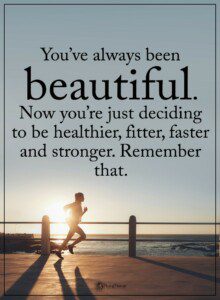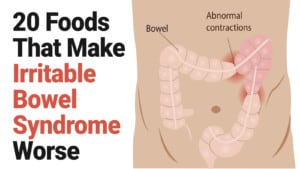Does it seem like every time you turn around, you see a flashy infomercial for yet another diet program, such as the Whole 30 diet? Since statistics show that Americans spent at least 2.5 billion dollars on commercial diet programs in 2014 alone, it stands to reason that the numbers have increased.
Unfortunately, many current studies about how effective these programs are, prove to be inconclusive.
Doctors and registered dieticians use the 2015 revised USDA food guidelines as a standard for maintaining a healthy weight. These guidelines have been studied for years and have proven results for healthy adults and children. However, some of the recommendations may be modified under medical supervision for effective weight loss.
Why Try Whole30?
If you have battled the bulge any time during your life, you’re no stranger to fad diets. Some of them range from the benign to the bizarre. Most of these ask you to take nutritional supplements, drink unpalatable shakes, follow complicated menus, or nix some of the primary food groups your body needs. Your body craves a variety and will bore quickly with limited food options.
At first, people tend to lose some weight with fad diets, which is often water loss. Most people eventually fail on these impractical diet scams, and they gain back the weight plus some. The results are heavier people with slimmer wallets who are still part of America’s obesity epidemic.
Remember the wise saying that things which sound too good to be true usually are? Science and research demonstrate that people who lose at a slow and steady pace are apt to lose more weight and keep it off than with fad dieting. Unlike many of the countless diet trends on the market today, the Whole 30 diet plan doesn’t make unrealistic claims of quick weight loss with minimal effort.
Before you launch another diet and fitness program like the Whole30 diet, consider the pros and cons that dieticians have shared. As with similar commercial diet programs, experts have analyzed how nutritionally sound and safe this program is. The Whole 30 diet has a lot in common with other high-protein, low-fat, and low-carbohydrate diets.
How Does the Whole 30 Diet Plan Work?
This eating plan was the brainchild of Dallas Hartwig and his wife, Melissa Urban, who introduced it in 2009. The Hartwigs are certified nutritionists interested in eliminating certain foods to minimize body inflammation while encouraging weight loss and boosting energy. It was a process of trial and error.
For thirty days, the couple determined to eat only whole, minimally processed food. They eliminated sugar, dairy, whole wheat, soy, alcohol, and processed food since they can cause inflammation. After the month-long trial, the Hartwigs were impressed with their success and decided to share their program with the world in a best-selling book.
The Hartwig’s plan is an elimination diet that targets certain food groups as the enemy. These diets have been around for a long time and continue in cycles. The usual culprits up for elimination include starchy foods (carbohydrates), sugar, dairy, legumes, caffeine, alcohol, most fruits, and anything processed.
The food elimination list from the Whole 30 diet plan is hardly unique. Your monthly eating plan includes red meat, fish, poultry, most vegetables, fruit, and heart-healthy oils instead of forbidden food. According to the Hartwigs, you don’t need to measure foods or count calories to lose weight and feel great on their plan.
While most of the plan looks good on paper, how does it measure up to nutritional guidelines and long-term success? Is Hartwig’s plan sustainable for weight loss, or can it be chalked up as another fad diet? Consider these pros and cons of the Whole30 diet plan.
Pros of the Whole30 Diet Program
1. The Diet Encourages You to Eat Whole Foods
You remember the axiom that says if you can’t pronounce the ingredients, don’t eat it? The Whole 30 diet plan centers around whole foods and those that are processed as least as possible. Some nutritionists advise that the best foods to consume are those with five or fewer ingredients.
Since experts recommend that we eliminate as many overly processed foods as possible, the Whole 30 diet plan complies. Processed foods are often laden with sugar, salt, and questionable additives high in calories and low in nutrition. You are bound to see good results if you incorporate more whole foods and less processed ones into your diet.
2. The Whole 30 Diet Program Includes Heart-Healthy Fats
Medical science concurs that a diet low in saturated fats is healthy for your heart and your body. Consuming too much puts people at risk for obesity, heart conditions, diabetes, strokes, and other maladies. Many circulating fad diets distort these facts and encourage adherents to all but eliminate fat from their meals.
Health experts explain that our bodies need a certain amount of fat in our diets to be healthy, such as unsaturated fats. The Whole30 diet plan allows you to eat heart-healthy fats like olive oil, fatty fish, and nuts in moderation. These fats nourish your body cells and are necessary for proper brain function.
3. This Diet Eliminates Added Sugar and Sodium
Most people realize that too much sugar and salt in their diets can be catastrophic for their health. Yet, you would be surprised at the seemingly innocent foods that are secretly loaded with salt and sugar for taste quality. No wonder so many diet programs, including Whole30, encourage people to read labels and eliminate these.
However, the Whole 30 takes it a step further and asks followers to nix artificial sweeteners and natural ones like honey, maple syrup, and agave—the only approved sweetener in certain fruit juices. Since the Whole 30 diet discourages added sugar and salt, it follows healthy guidelines.
4. You May Discover New Foods and Seasoning Options
When you have several foods restricted from your diet, it may force you to consider other options. Since the program advocates meals that are generous with veggies, you may try some that you’ve never tasted. You will be expanding your palate while reducing your waistline.
Since salt is a no-no on the Whole30 plan, you may delight in experimenting with fresh herbs and spices for new taste sensations. Many herbs and spices have other health benefits that you may reap after a while. You may be amazed at what you’ve been missing.
Cons of the Whole 30 Lifestyle
1. Forbidden Fruit Tastes the Sweetest
Boredom and the feeling of deprivation are the chief saboteurs of any diet plan. You probably enjoy variety in your food choices as much as anyone else. When you hear that food is forbidden, you usually ruminate over it until you give in to your cravings.
Instead of teaching people to make smart choices and everything in moderation, the Whole30 diet eliminates entire food groups, like whole grains and beneficial carbohydrates. Such a restrictive diet may be unrealistic and set you up for failure.
2. This Diet Eliminates Dairy Products
While it’s true that some people who are lactose intolerant should steer clear of dairy products, the same isn’t right for everyone. Dairy products like milk, yogurt, and cheese are rich sources of the calcium and Vitamin D necessary for healthy bones, teeth, and other systems in your body.
Eliminating dairy from your body may cause you to be deficient in calcium and Vitamin D, putting you at risk for brittle bone disease and osteoporosis. A better approach would be to choose low-fat dairy products and keep your daily portions controlled.
3. Should You Eliminate Whole Grains for Your Diet?
Unless you have celiac disease or can’t tolerate gluten, nutritionists recommend a diet fortified with delicious whole grains. Do you honestly think you can create a sustainable lifestyle by eliminating an entire food group that benefits your health?
Much of the fiber you consume each day is provided by whole grains like wheat, oats, brown rice, and popcorn. Your body requires fiber for proper digestion and to boost the feelings of fullness. Whole grains are also nutritional powerhouses linked with lower risks of cancer, high blood pressure, and heart disease.
4. This Plan Doesn’t Fit Every Budget
As you read through the Whole30 plan, suggested menus and recipes, you may notice many ingredients that aren’t on your usual grocery list. These items may be difficult to find in your area, and you may need to order them online. Additionally, many of these suggested foods can be quite pricey and may not be practical on a limited food budget.
You may sacrifice and purchase luxury ingredients for a while, but it can be discouraging and hard on your wallet. If a diet requires expensive components that are a bother to find, chances are you won’t stick to it. If you enjoy a generous grocery budget, are single, or there’s just the two of you, this objection may not be an issue.
 Final Thoughts on Deciding if the Whole 30 Program is Right for You
Final Thoughts on Deciding if the Whole 30 Program is Right for You
If you can deal with a restrictive diet that may increase your grocery budget, then the Whole30 menu may be for you. However, these restrictions can be detrimental to your health in the long run and maybe hurt more than help. Before you consider this or any other diet and fitness regimen, talk to your healthcare provider or a registered dietician.
The post Dietitians Share the Pros and Cons of the Whole30 Diet appeared first on Power of Positivity: Positive Thinking & Attitude.
【Top 10 Malaysia & Singapore Most Beautiful Girls】Have you follow?


